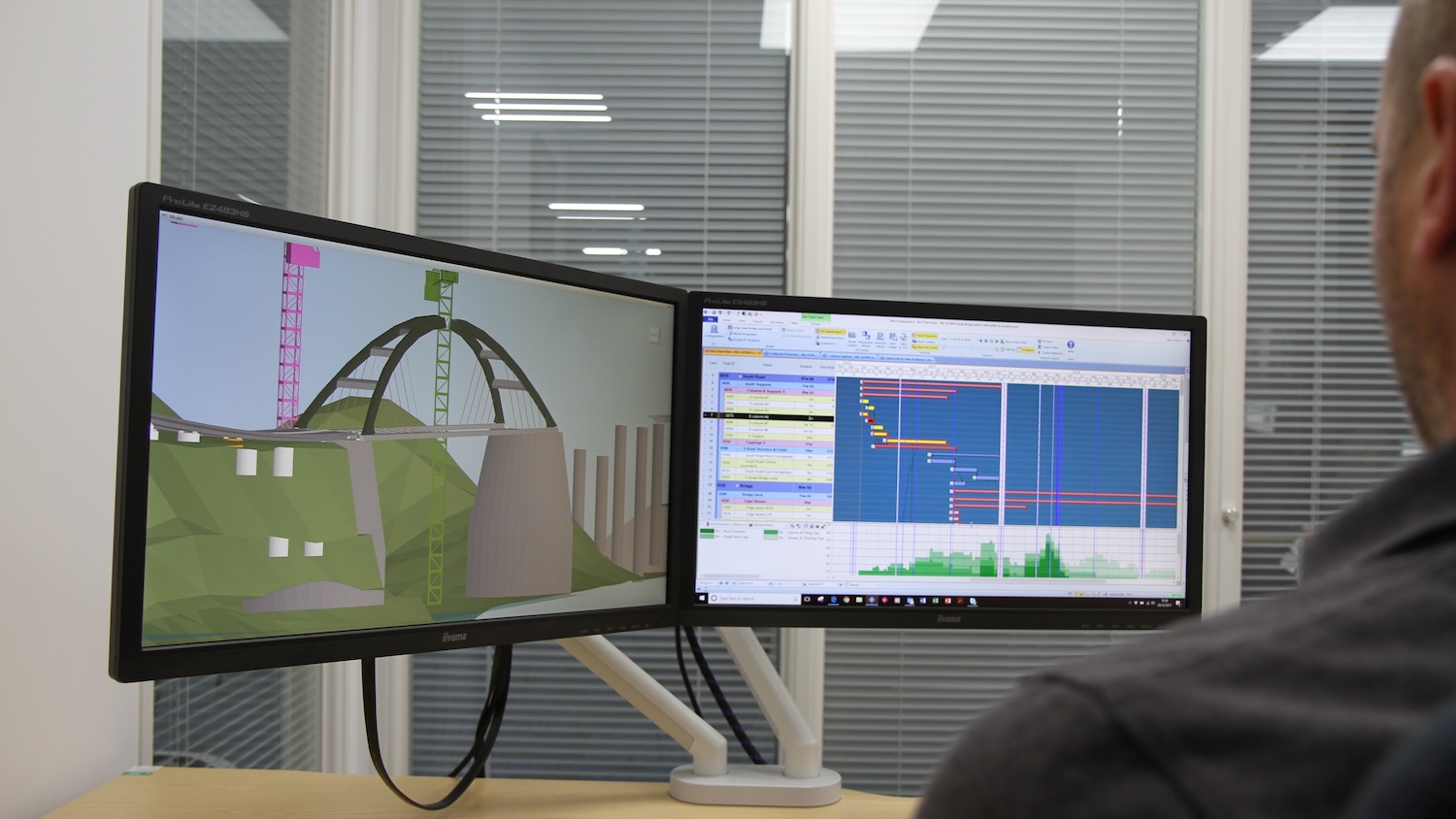What is model-based planning and how can you implement it? Mark Chapman at Elecosoft provides the answers.
At its core, model-based planning is defined by the early and continuous integration of information-rich 3D models as the basis for project schedules. Model-based planning harnesses the data necessary for scheduling that is already present within the models, leveraging IFC as a data schema for both 3D design geometry and 3D design properties such as quantity, location or even any business-specific coding.
This allows us to harness the power of IFC beyond its traditional use in the 4D process as a simple exchange format for the 3D model and instead use its powerful underlying data schema to help automate the planning process and harness the information in the models to help drive better decision-making.
While standard 3D formats focus on geometric representation (what an object looks like – its shape, surfaces, textures), IFC goes further by defining what an object is. It embeds project-specific properties, relationships and lifecycle information directly into the model.
This means an IFC wall isn’t just a collection of triangles: it inherently carries data, such as its fire rating, material composition, U-value and its connection to a specific building storey or an adjacent door. This is a rich source of machine-readable data for process automation, intelligent analysis or reporting, alignment of functions around common data, future facility management throughout a building’s entire lifecycle and even drill-down of historic data for other uses, such as training AI.
This fundamental shift can bring benefits for projects, which include a more active, automated, interconnected, and ultimately reliable planning experience.
A unified data environment
Traditional approaches usually involve separate systems for scheduling and 4D modelling. These require manual synchronisation, which can be time-consuming, prone to errors, or time delays between the completion of scheduling and the availability of 4D, so they are always out of alignment.
In contrast, model-based planning fosters an integrated environment where data flows directly from the model to generate and update schedules. This all-in-one solution reduces the need for multiple software tools and operators, streamlining workflows, and improving accuracy. The focus shifts from a passive review of a 4D model to active use of the model as the central source of planning information.
Implementing model-based planning: top tips
• Understand the ‘why’: define your goals and objectives.
• Build foundational knowledge and awareness.
• Invest in the right technology and tools.
• Develop internal skills and capabilities.
• Establish integrated workflows and processes.
• Foster a culture of collaboration and information sharing.
• Start with small pilot projects at tender stage and iterative implementation.
• Establish clear metrics for success.
The adoption of model-based planning represents a move towards a more integrated, efficient, and reliable construction delivery process. By harnessing the power of data-rich models from the outset, construction leaders can overcome the limitations of traditional methods and position themselves to take advantage of future innovations.
The current tendency to use 4D as a late-stage validation tool highlights an opportunity for a more proactive and preventative approach. By integrating 4D planning early in the project lifecycle, planners, engineers and project managers can identify issues or opportunities earlier, shifting to a proactive approach to resolution.
The costly and time-consuming iterative feedback loops often associated with manual scheduling and late-stage clash detection highlight the value of automated processes. Additionally, the difficulty in keeping 4D models updated can be overcome with systems designed for easy and continuous model updates through direct data links.
Moving beyond passive planning
The current limitations of 4D planning are not insurmountable obstacles; but rather clear indicators of the immense opportunities that lie in embracing model-based planning principles and innovative technologies.
Project planning will evolve. Inevitably, a largely manual and sometimes chaotic process for consuming, managing and interpreting vast amounts of data will change. As an industry, we could significantly improve productivity and reliability of time and cost forecasts by persisting with model-based workflows, which can then be further automated with AI agents.
With our Asta 4D, we’re transforming 4D planning into a key tool for better projects.
The post Model-based planning: all you need to know to get started appeared first on Construction Management.
View the original article and our Inspiration here


Leave a Reply